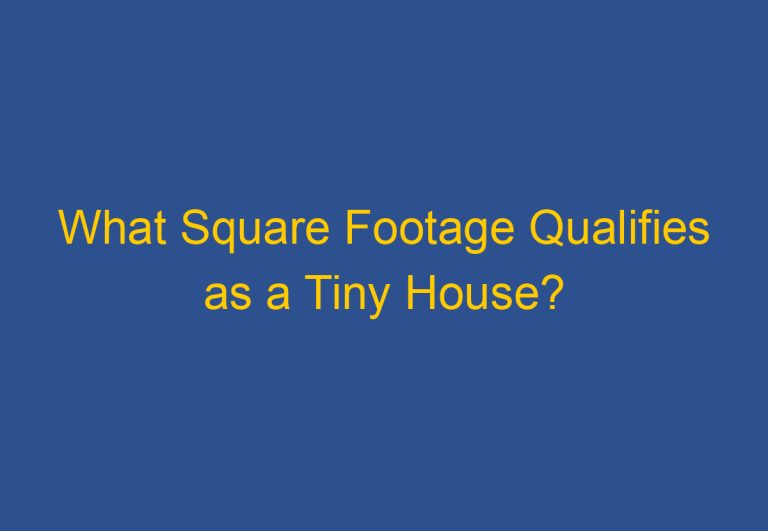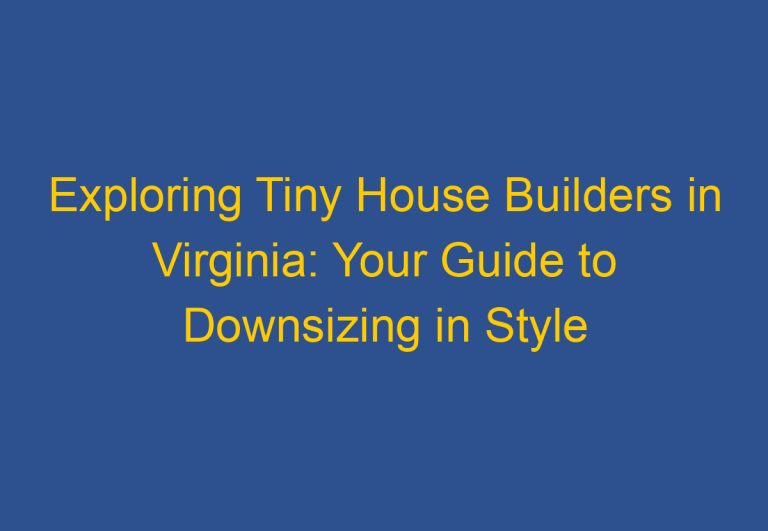How Much Is a Tiny House from Tiny House Nation? Exploring Prices and Options
The tiny house movement has gained a lot of attention, and “Tiny House Nation” has played a key role in this trend. Hosted by John Weisbarth and Zack Giffin, the show explores creative solutions for living in smaller spaces. The price of a tiny house typically ranges from $30,000 to $70,000, depending on factors like size and materials. This makes tiny homes an appealing option for those looking to simplify their lives and escape the burden of large mortgages.

Many people are drawn to the tiny house lifestyle, as it offers the freedom of minimalism while maximizing creativity in home design. The hosts travel across the country, helping families design and build their dream homes, often within just 500 square feet. As more viewers tune in through platforms like Netflix, the interest in tiny living continues to rise.
Understanding the costs involved in building or buying a tiny house is crucial for aspiring homeowners. The investment can vary widely based on individual preferences and needs, leading many to wonder about the best options available. Exploring these factors can reveal how affordable and achievable the tiny house dream really is.
Understanding Tiny Houses

Tiny houses have gained popularity as a solution for those looking for affordable and efficient living. The concept reflects a lifestyle focused on minimizing clutter and maximizing experiences. Aspects such as historical background, design features, and legal considerations play significant roles in understanding tiny houses.
Historical and Cultural Context
The tiny house movement stems from a desire for simpler living, often linked to economic challenges and environmental concerns. In the early 2000s, advocates like Jay Shafer started promoting smaller homes as a way to reduce housing costs and environmental impact.
The movement reflects a shift towards minimalism, valuing experiences over possessions. Tiny houses are often seen as sustainable alternatives that promote efficient use of resources and a closer-knit community. Additionally, they encourage people to be more mindful of their consumption habits.
Design and Features
Tiny houses prioritize functionality in their design. They typically range from 100 to 400 square feet, with an emphasis on smart use of space. Many features include lofts for sleeping, compact kitchens, and multifunctional furniture.
Common materials used in construction include wood, metal, and eco-friendly options. The layout is often open, allowing for flexibility in how the space is used. Storage solutions are crucial, with features like under-bed storage, wall shelves, and built-in cabinets to reduce clutter.
Key Features:
- Lofts: Maximize vertical space for sleeping.
- Compact Kitchens: Efficient design for cooking.
- Multifunctional Furniture: Adapts to various needs.
Legality and Zoning
Understanding zoning laws is essential for tiny house plans. These laws dictate where tiny houses can be built and on what type of land. Some areas allow tiny homes on wheels, while others require them to be on a foundation as accessory dwelling units (ADUs).
Potential owners should check local regulations before purchasing or building a tiny house. Zoning restrictions can impact the availability of land, building materials, and even the design of the home. Knowledge of these laws helps ensure a smooth construction process and compliance with local standards.
Cost and Investment

When considering a tiny house from Tiny House Nation, understanding the costs involved is crucial. Factors such as size, materials, and labor impact the overall investment. Also, ongoing living expenses and potential resale value play significant roles in this decision.
Price Determinants
The cost of a tiny house ranges significantly based on various factors. Typically, building one can cost $30,000 to $70,000. This price includes materials and labor. Custom designs may increase the price per square foot to between $150 and $450, depending on size and features.
DIY builders might spend around $20,000 to $40,000 on materials alone, making it a more affordable option. Conversely, pre-built models often cost $50,000 to $100,000 due to labor costs and expertise involved. Size is crucial; smaller houses cost less, while larger ones can quickly elevate the budget, especially with high-end amenities.
Living Expenses
Living in a tiny house can lead to lower monthly expenses. Many owners report savings on utilities and maintenance. Tiny homes are often more energy-efficient, reducing costs for heating and cooling.
The overall expenses can fluctuate based on location. Urban areas may have higher land costs, while rural settings often offer affordability. Additionally, tiny houses usually come with less square footage, which means lower property taxes. Those downsizing to a tiny home might find the experience liberating and financially sound, allowing extra funds for travel or entertainment.
Resale and Value
Resale value for tiny houses varies by market demand. In areas where tiny living is gaining popularity, resale prices can be favorable. High-quality materials and unique designs may also lead to higher resale returns.
However, potential buyers should consider the market saturation in their area. Investing in well-built homes in desirable regions can attract buyers and drive up the value. Regular maintenance and updates ensure that a tiny house remains appealing and retains value over time. Thus, thoughtful investment in both the house and its upkeep can lead to profitable returns.
Frequently Asked Questions

This section addresses common queries about tiny homes featured on Tiny House Nation. It provides insights into costs, ownership, and updates on the show.
What is the average cost of a tiny home featured on Tiny House Nation?
The average cost of a tiny home showcased on Tiny House Nation can range widely. Prices often fall between $30,000 and $70,000 based on materials and labor. Custom designs and added features can push costs higher.
Is it typically less expensive to build a tiny home oneself compared to purchasing one from Tiny House Nation?
Building a tiny home oneself can often be less expensive than buying one. DIY options can start around $25,000, while homes from Tiny House Nation may include higher costs due to customization and professional help.
Can you provide an update on the legal matters involving Tiny House Nation?
Legal matters surrounding tiny homes can vary by location. Regulations about building codes, zoning, and parking spots often influence the feasibility of living in a tiny house. Updates are sometimes discussed during episodes of Tiny House Nation.
How can individuals apply to obtain a tiny house through Tiny House Nation?
Individuals interested in a tiny house from Tiny House Nation typically need to fill out an application. The process may include sharing personal stories and reasons for wanting a tiny home. Participants often undergo interviews to assess their fit for the show.
What are the ownership costs for houses featured on Tiny House Nation after the show airs?
After a tiny house is built, owners may face costs like property taxes, utilities, and maintenance. Living in a tiny home can reduce some costs, but owners still need to budget for ongoing expenses.
Has Tiny House Nation been discontinued, and what are the reasons for its cancellation?
Tiny House Nation has ended, with various reasons contributing to its cancellation. Factors may include changing viewer interests and production costs, making it challenging to continue the series.






